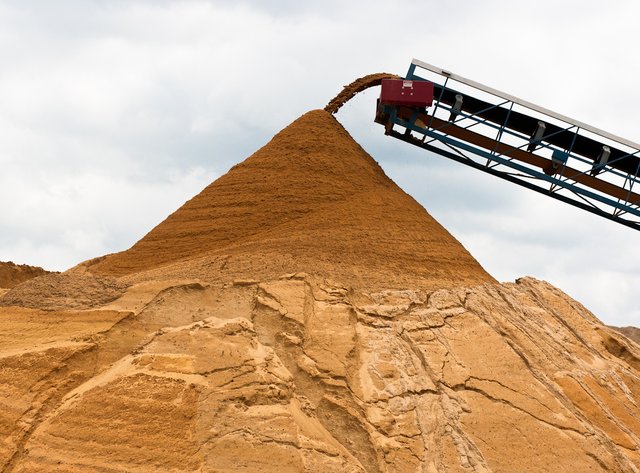Price formation of sand

Sand is a natural granular material, which is divided into different types. A non-involved person may ignore this, but for a potential investor this article might be of some service. Let’s take a look how the price of sand is being formed.
Origin
We will not examine artificial sands, only natural ones. Sand is divided into river (sea) and pit-run types. The difference is in mining complexity. A river or sea sand is harder to mine, it involves complex mining systems. So, consequently, the price is higher. Nevertheless, this type of sand is much clearer: the permeability is better 3–4 times and this is quite essential for fine production.
The reason for this is the lack of dirts, foreign matters, dust, large fractions, etc. Thus, the price for river sand is twice higher than for coarse pit-run sand. It is sold at the price of 200–220 RUR ($ 3,5–4) per tonne in Russian regions, and about 450–500 ($7,5–8) per tonne in Moscow and Leningrad regions. Compare with India, where a construction boom takes place — the prices are almost identical. The cost of river sand in India starts at 500 INR ($7,5) per tonne.
Processing
Coarse pit-run sand is the cheapest one. In Russian regions the price for it is rather low: it starts with 70–80 RUR per tonne. In Podmoskovye the price are higher and start from 200 RUR per tonne.
After it is being mined, the sand can be processed. This increases the price. The processing is separated into washing and sifting. Each manipulation increases the final cost — from 10 to 30%. The washing and sifting is a necessary part of cleansing the sand from large fractions or foreign matters like clay. The permeability of washed sand is 2–2,5 higher.
Also, the processed sand is divided into classes, depending on grain types. The less is the grain size — the better the class of a fine sand, the higher the price. It fluctuates from 200 to 500 RUR per tonne.
Transportation / logistics
Regardless of origin and processing, the sand is to be transported to the consumer. Some mining companies don’t have such service on their list and put the prices only for the goods. Special vehicles and lorries are being for the delivery. The logistic costs depend on the volume of transportation, the fuel consumption. The distance is the key — the farther the quarry, the more expenses. At an average, the price for transportation is about 120–150 RUR per kilometer with the procurement volume of 100 cubic meters and more. This way, the buyer is interested in the quarry, which is situated close to the place of destination.
Packaging
Small volumes of sand intended for retail are mostly packed into bags of 20, 30, 50 kg. This makes the price go high many times. The price for a 50-kg bag costs about 40–100 roubles. The packed sand is sold in retail shops as construction or decorative material.
So, we mentioned the most essential factors which take the part in price formation of sand. Of course, some other circumstances may occur but they depend on a situation.
The prices for sand on Russian market are stable because of its high demand. Exactly that’s why the Sand Coin is bonded to the price of 1 m3 of mortar sand. The average market price of it is at the level of $5,30. We are sure in the steady price for the next few years and this way we offer you to take part in Sand Coin ICO, which takes place on 18 September 2017.
I sometimes worry about bitcoin at night. There is some comfort in thinking that every night, we are getting closer to the moon.